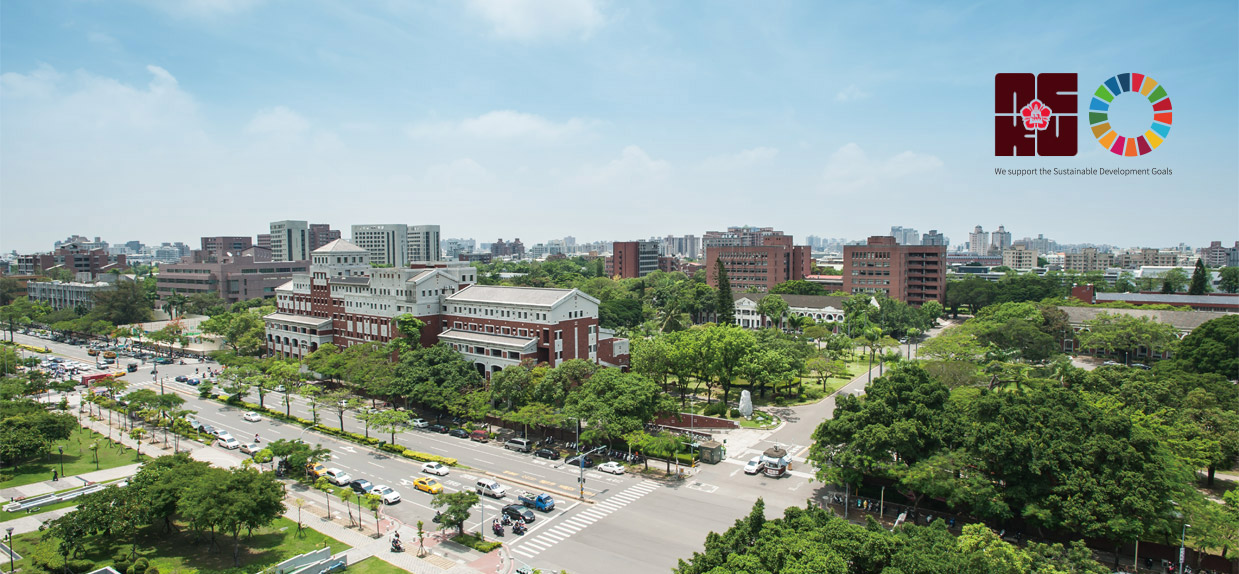
Planning development - new build standards
11.4.8
SDG11
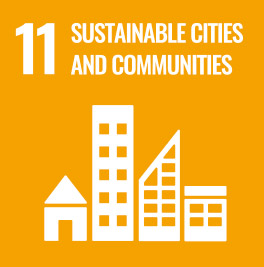
Planning development - new build standards
The University has established a Sustainable Campus Planning and Utilization Committee and an Energy Conservation Promotion Committee to coordinate energy-saving and sustainability across campus buildings and facilities, with a target of carbon neutrality by 2041.
As a flagship demonstration site, the Magic School of Green Technologies is Taiwan’s first zero-carbon green building, certified EEWH Diamond and LEED Platinum, showcasing affordable green-building technologies. New campus projects are planned against the nine green-building indicators, with multiple certified buildings already in place, including the Dongning Campus Affiliated Kindergarten (Silver).
In parallel, NCKU is advancing an urban-scale practice by establishing the Shalun Hospital under the themes of digital innovation, health sustainability, and smart green building. The Office of General Affairs also maintains an Energy-Saving Campus portal that consolidates measures and outcomes for public verification.
- Establishment Guidance of the Sustainable Campus Planning and Utilization Committee, NCKU
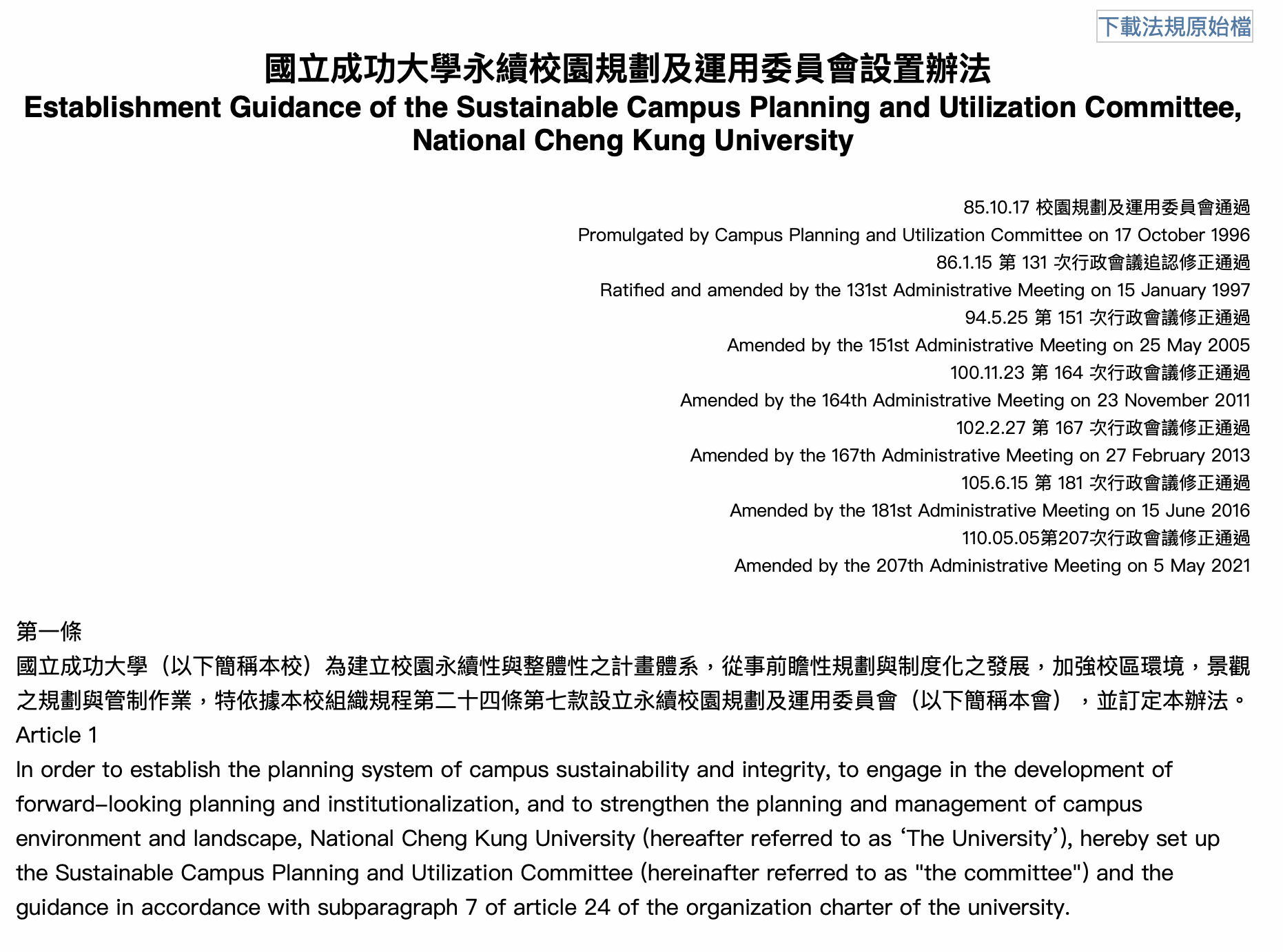 The Establishment Guidance of the Sustainable Campus Planning and Utilization Committee at NCKU was first enacted in 1996 and has since undergone several amendments. Its purpose is to establish a comprehensive system for campus sustainability planning, promote forward-looking projects and institutionalized development, and strengthen the management of the campus environment. In accordance with Article 24 of the university’s organizational charter, the Sustainable Campus Planning and Utilization Committee was established, responsible for campus sustainability planning, land use, and related policy recommendations. Through institutionalized operations, this guidance ensures that campus planning balances environmental protection with future development, thereby advancing sustainability goals.
The Establishment Guidance of the Sustainable Campus Planning and Utilization Committee at NCKU was first enacted in 1996 and has since undergone several amendments. Its purpose is to establish a comprehensive system for campus sustainability planning, promote forward-looking projects and institutionalized development, and strengthen the management of the campus environment. In accordance with Article 24 of the university’s organizational charter, the Sustainable Campus Planning and Utilization Committee was established, responsible for campus sustainability planning, land use, and related policy recommendations. Through institutionalized operations, this guidance ensures that campus planning balances environmental protection with future development, thereby advancing sustainability goals.- THE MAGIC SCHOOL OF GREEN TECHNOLOGIES
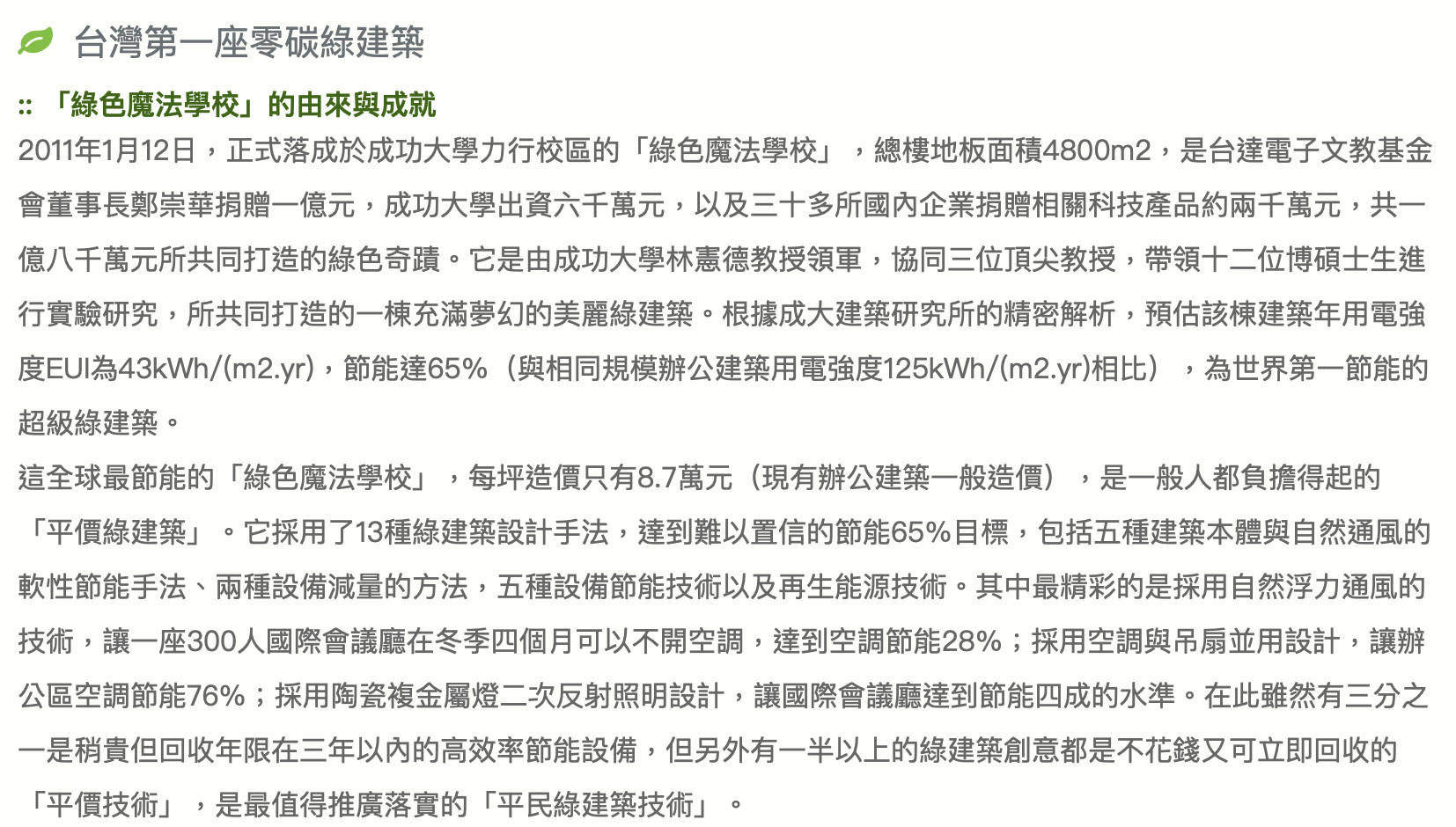 NCKU’s “Magic School of Green Technologies”, completed in 2011, is Taiwan’s first zero-carbon green building, with a total floor area of 4,800 square meters. It was jointly funded by the university and industry partners. Designed by Professor Hsien-Te Lin’s team, the building incorporates 13 green building strategies and renewable energy technologies, achieving a 65% energy-saving effect. Its annual energy use intensity is only 43 kWh/(㎡·yr), far lower than the 125 kWh/(㎡·yr) of comparable buildings. Key features include natural buoyancy ventilation, energy-efficient air conditioning, and lighting design, enabling a 300-person conference hall to operate in winter without air conditioning and reducing public space energy consumption by 76%. Recognized as one of the world’s most energy-efficient buildings, it also embodies the concept of “affordable green building” with a construction cost of only NT$87,000 per ping, demonstrating a sustainable model that is both high-performing and cost-effective.
NCKU’s “Magic School of Green Technologies”, completed in 2011, is Taiwan’s first zero-carbon green building, with a total floor area of 4,800 square meters. It was jointly funded by the university and industry partners. Designed by Professor Hsien-Te Lin’s team, the building incorporates 13 green building strategies and renewable energy technologies, achieving a 65% energy-saving effect. Its annual energy use intensity is only 43 kWh/(㎡·yr), far lower than the 125 kWh/(㎡·yr) of comparable buildings. Key features include natural buoyancy ventilation, energy-efficient air conditioning, and lighting design, enabling a 300-person conference hall to operate in winter without air conditioning and reducing public space energy consumption by 76%. Recognized as one of the world’s most energy-efficient buildings, it also embodies the concept of “affordable green building” with a construction cost of only NT$87,000 per ping, demonstrating a sustainable model that is both high-performing and cost-effective.- 【Video】Digital Innovation and Sustainable Health: Building a Smart and Livable Future City — Vice President Ching-Te Lai Attends the Groundbreaking Ceremony of NCKU Shalun Hospital (Smart Green Building)
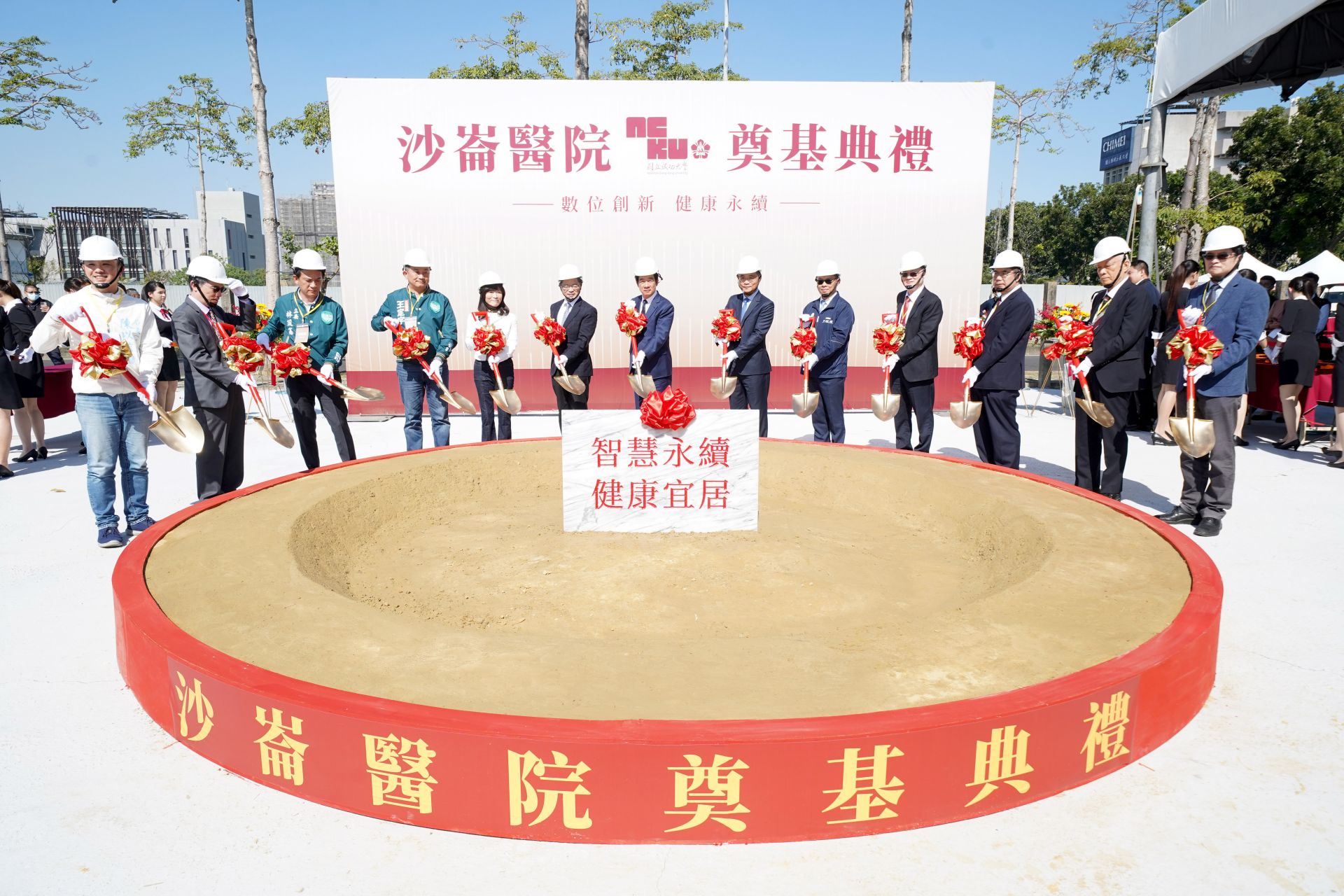 The photo was taken at the groundbreaking ceremony of NCKU’s Shalun Hospital, where Vice President Ching-Te Lai personally attended and, together with distinguished guests, symbolically broke ground to mark the official commencement of the project. Shalun Hospital is founded on the core principles of “digital innovation and sustainable health.” In the future, it will integrate smart healthcare with green building design to create a sustainable medical environment that is both intelligent and livable. The hospital will not only provide high-quality medical services but will also play a vital role in advancing medical innovation and fostering collaboration with industry. It aspires to become a key demonstration site for smart healthcare and sustainable healthy cities.
The photo was taken at the groundbreaking ceremony of NCKU’s Shalun Hospital, where Vice President Ching-Te Lai personally attended and, together with distinguished guests, symbolically broke ground to mark the official commencement of the project. Shalun Hospital is founded on the core principles of “digital innovation and sustainable health.” In the future, it will integrate smart healthcare with green building design to create a sustainable medical environment that is both intelligent and livable. The hospital will not only provide high-quality medical services but will also play a vital role in advancing medical innovation and fostering collaboration with industry. It aspires to become a key demonstration site for smart healthcare and sustainable healthy cities.- Green Campus Performance Report
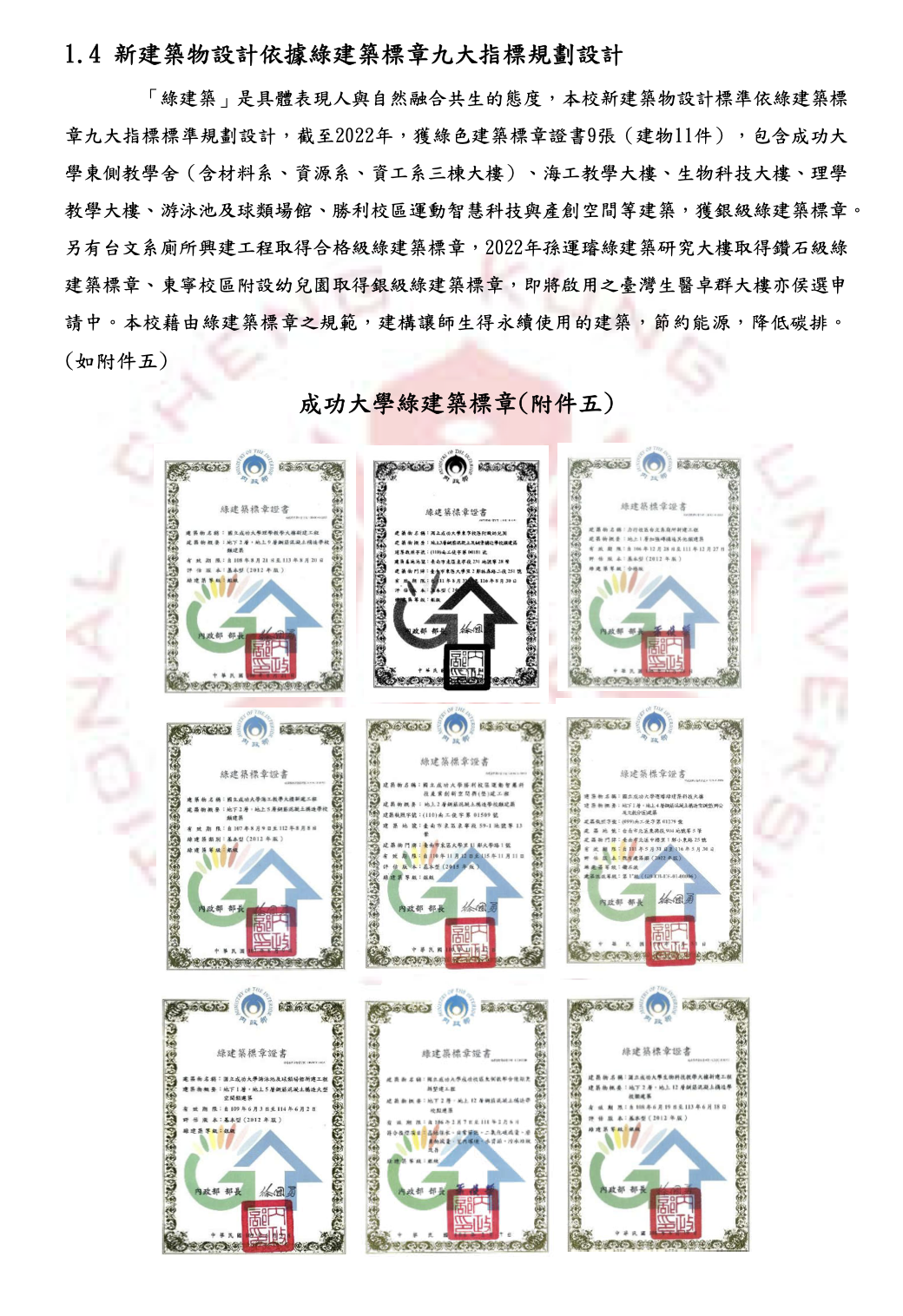 The university’s new buildings are planned and designed according to the nine major indicators of green architecture. By 2022, it had obtained nine Green Building Label certificates (covering 11 buildings), including the College of Power Engineering, the Ocean Engineering Building, the Biotechnology Building, the College of Science Teaching Building, the swimming pool and sports facilities, and the Victory Campus Smart Sports Technology and Innovation Space. Additional projects, such as the Department of Taiwanese Literature restrooms, the Sun Yun-suan Green Building Research Hall, and the Dongning Campus Kindergarten, have also received various levels of green building certification. NCKU emphasizes that these buildings were designed with sustainability as a guiding principle, implementing energy-saving, water-conservation, and waste-reduction strategies to realize a development blueprint for an environmentally friendly campus.
The university’s new buildings are planned and designed according to the nine major indicators of green architecture. By 2022, it had obtained nine Green Building Label certificates (covering 11 buildings), including the College of Power Engineering, the Ocean Engineering Building, the Biotechnology Building, the College of Science Teaching Building, the swimming pool and sports facilities, and the Victory Campus Smart Sports Technology and Innovation Space. Additional projects, such as the Department of Taiwanese Literature restrooms, the Sun Yun-suan Green Building Research Hall, and the Dongning Campus Kindergarten, have also received various levels of green building certification. NCKU emphasizes that these buildings were designed with sustainability as a guiding principle, implementing energy-saving, water-conservation, and waste-reduction strategies to realize a development blueprint for an environmentally friendly campus.- Energy-Saving Campus Zone
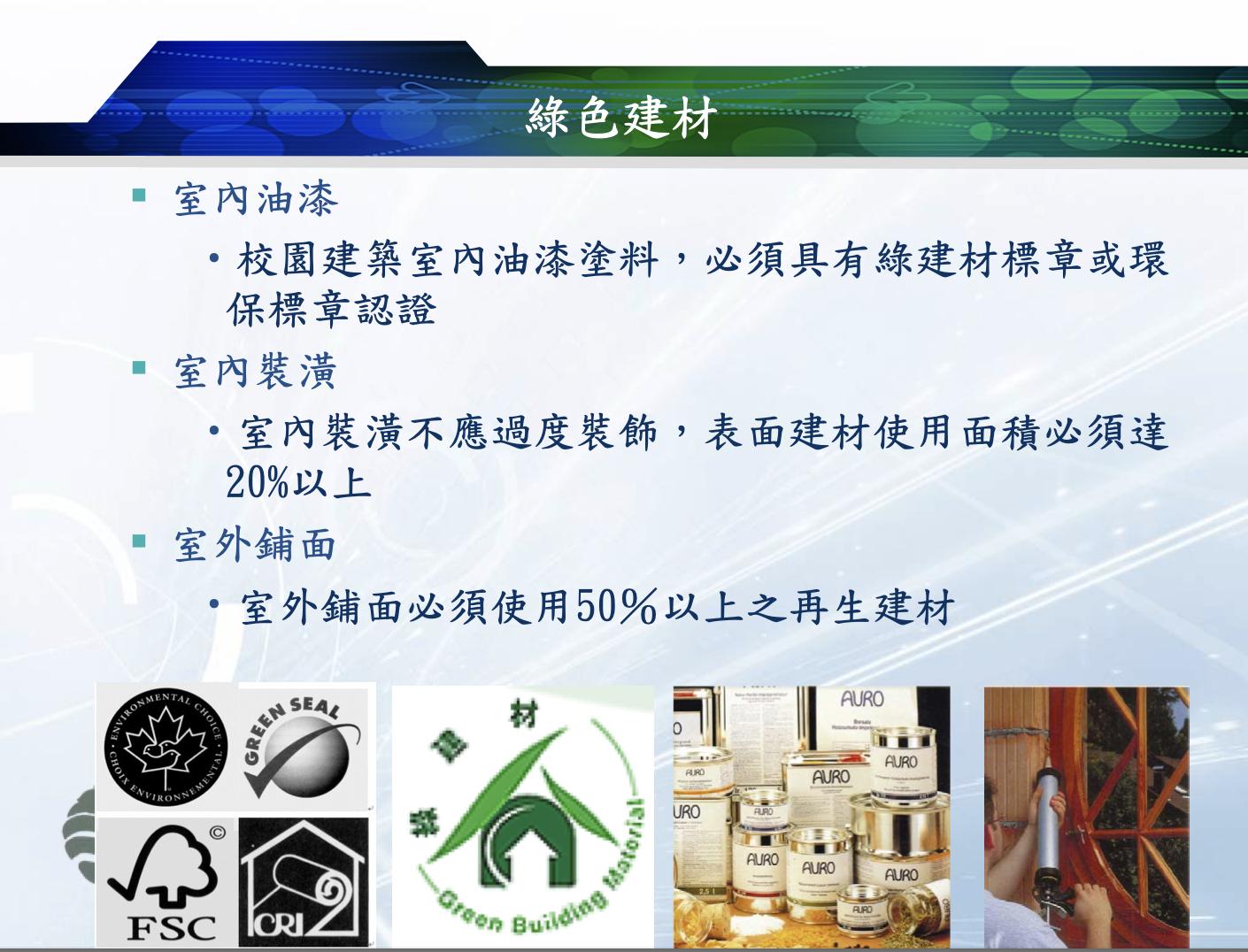 To promote the use of green building materials in campus construction, interior paints must carry a Green Building Material Label or eco-label certification to ensure environmental and health safety. Interior decoration should avoid excessive design, and surface building materials must account for at least 20% to reduce resource waste. For outdoor paving, at least 50% must use recycled materials to achieve circular reuse. This policy not only complies with green building standards but also demonstrates NCKU’s commitment to implementing sustainability principles and environmental responsibility in campus development, creating an energy-efficient and low-carbon campus environment.
To promote the use of green building materials in campus construction, interior paints must carry a Green Building Material Label or eco-label certification to ensure environmental and health safety. Interior decoration should avoid excessive design, and surface building materials must account for at least 20% to reduce resource waste. For outdoor paving, at least 50% must use recycled materials to achieve circular reuse. This policy not only complies with green building standards but also demonstrates NCKU’s commitment to implementing sustainability principles and environmental responsibility in campus development, creating an energy-efficient and low-carbon campus environment.